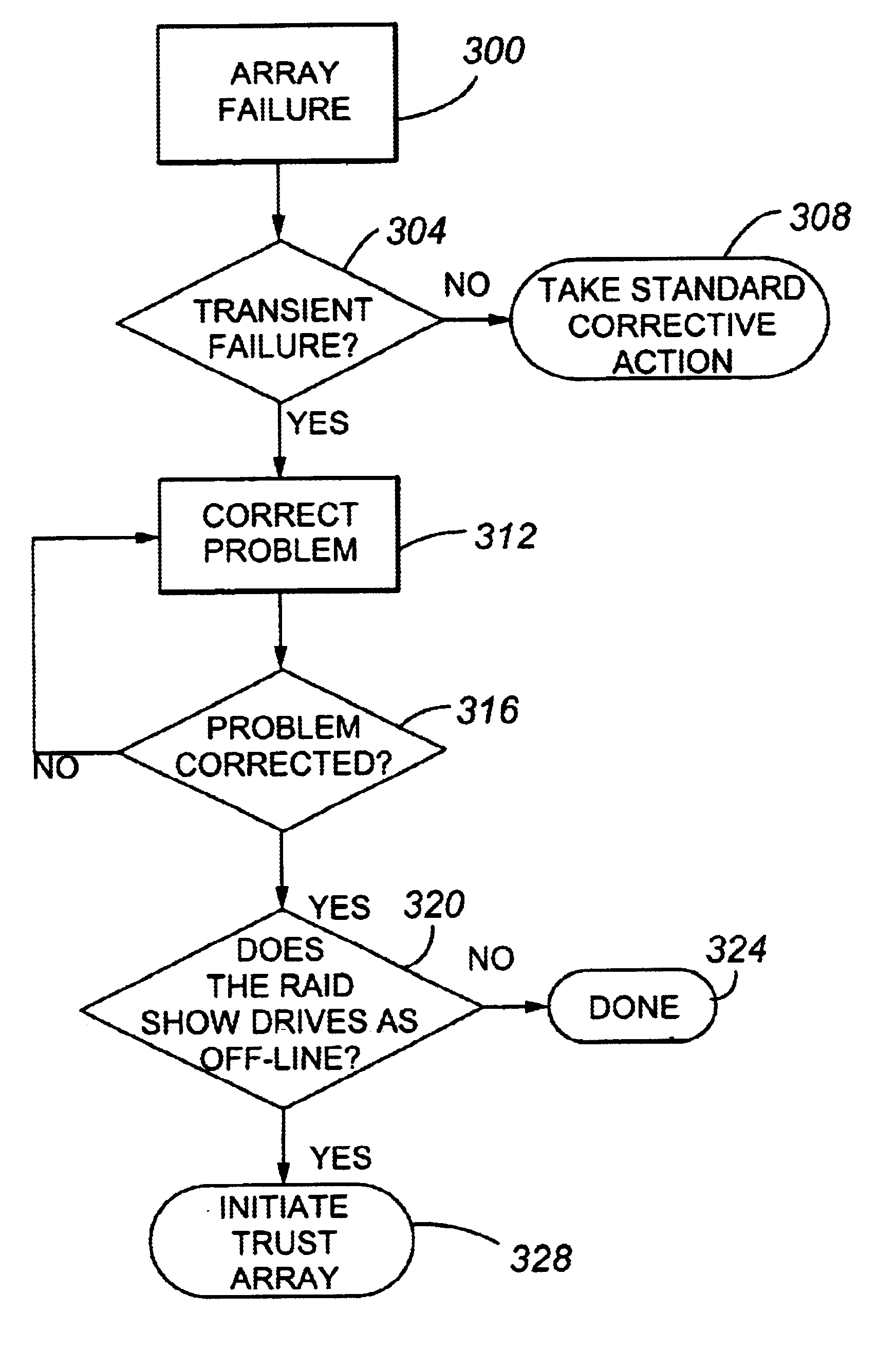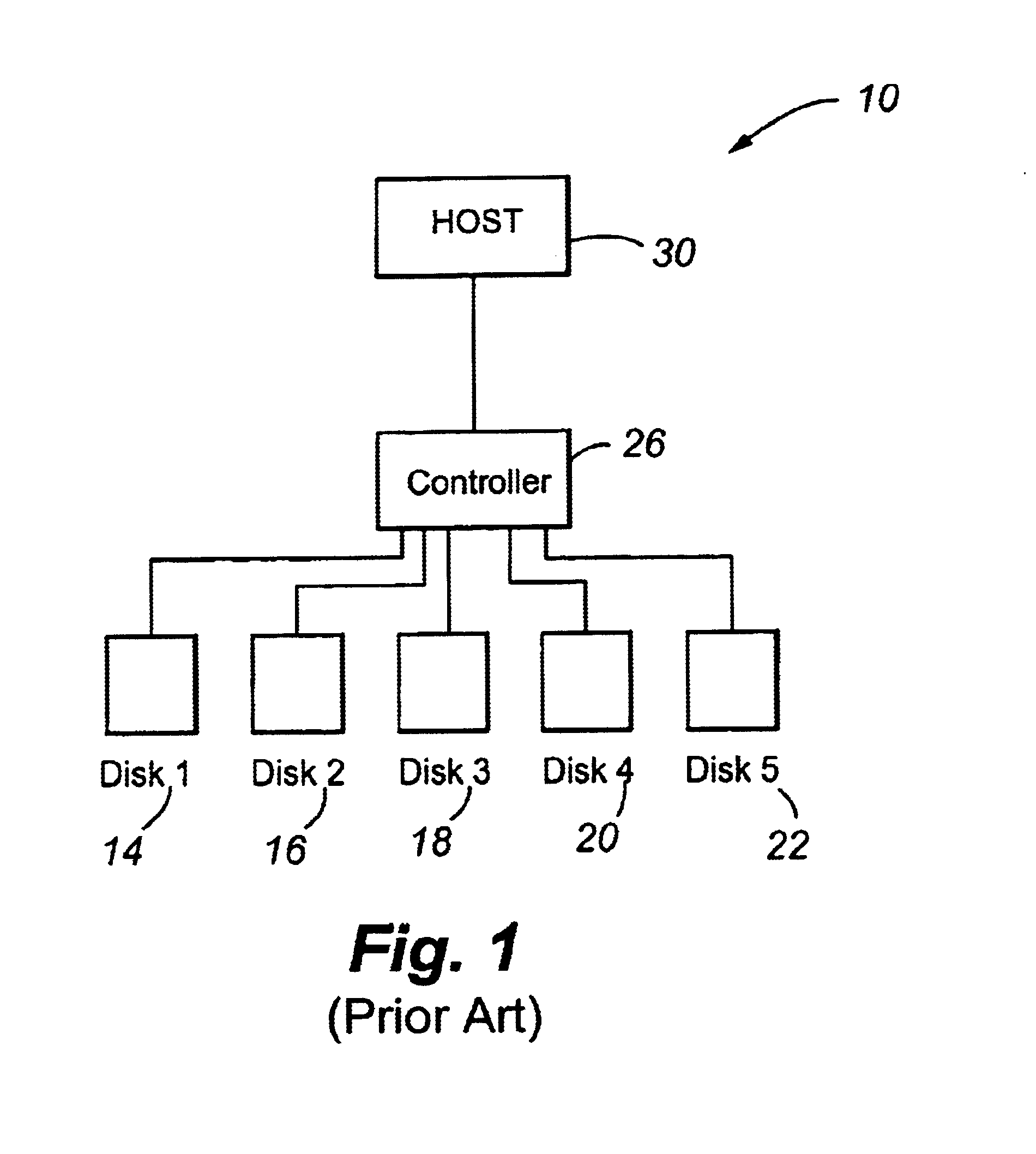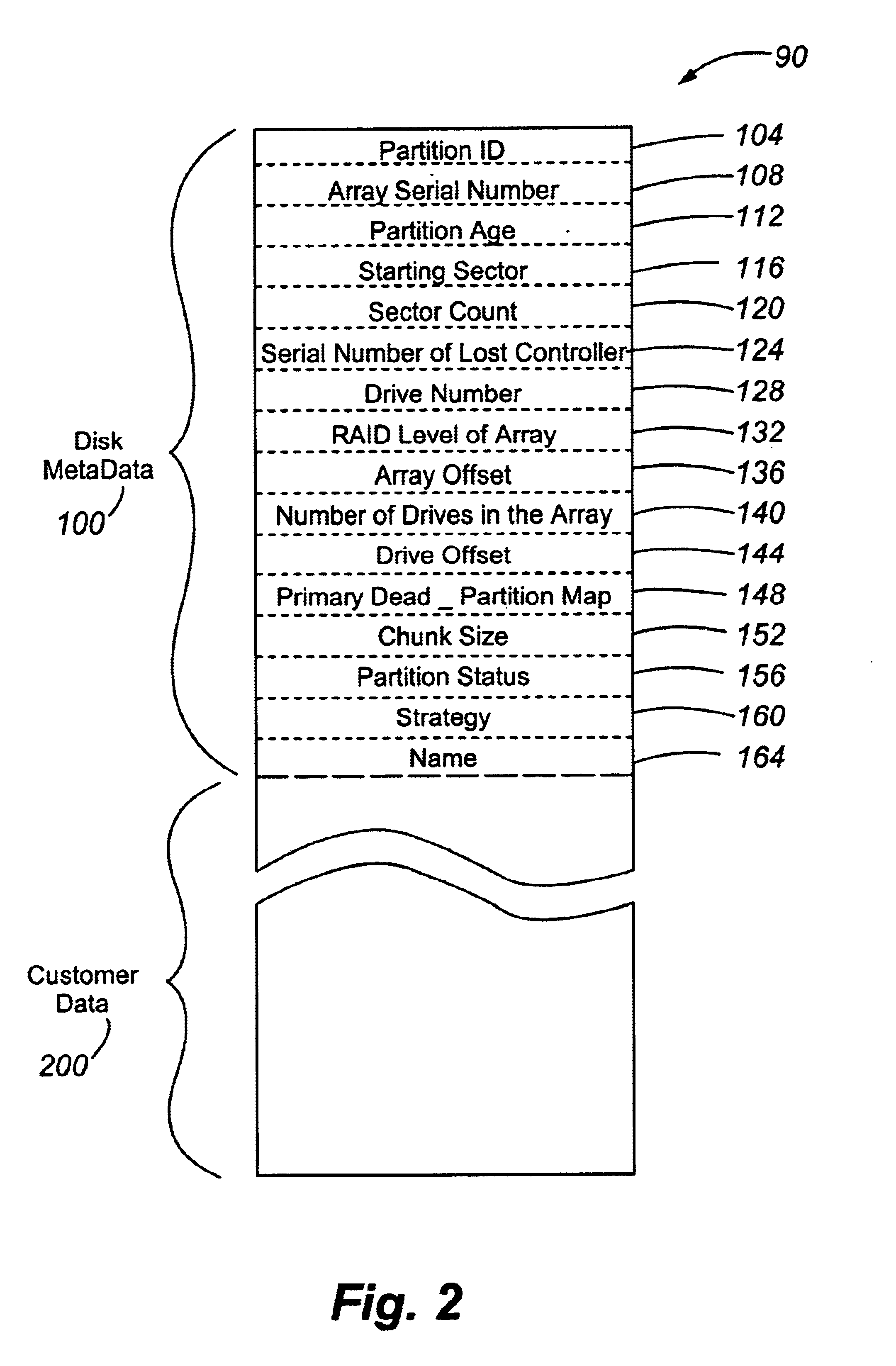Recovering data from arrays of storage devices after certain failures
a technology of arrays and storage devices, applied in error detection/correction, redundancy hardware error correction, instruments, etc., can solve problems such as metadata change, two or more storage devices are marked as bad, and transitory failure, so as to reduce the amount of time required
- Summary
- Abstract
- Description
- Claims
- Application Information
AI Technical Summary
Benefits of technology
Problems solved by technology
Method used
Image
Examples
Embodiment Construction
[0029]Referring now to FIGS. 1 and 2, the present invention utilizes the on-disk metadata to assist in recovering a RAID system 10. Each disk 14, 16, 18, 20, 22 in the RAID system 10 contains stored data 90. FIG. 2 shows a representation of one organization of this stored data. Generally, the data is divided into two categories, disk metadata 100, and customer data 200. The disk metadata 100, as will be described in detail below, contains data that the controller 26 uses to assist in the operation and management of the RAID system 10. The customer data 200 is data stored by the RAID system 10 which was sent by the host computer 30. As will be understood, this customer data 200 may include a variety of information from the host computer 30, such as software programs, personal data, or financial data, to name a few.
[0030]The disk metadata 100, as mentioned above, contains data which the controller 26 uses to assist RAID operation and management. The disk metadata 100 includes data fie...
PUM
 Login to View More
Login to View More Abstract
Description
Claims
Application Information
 Login to View More
Login to View More - R&D
- Intellectual Property
- Life Sciences
- Materials
- Tech Scout
- Unparalleled Data Quality
- Higher Quality Content
- 60% Fewer Hallucinations
Browse by: Latest US Patents, China's latest patents, Technical Efficacy Thesaurus, Application Domain, Technology Topic, Popular Technical Reports.
© 2025 PatSnap. All rights reserved.Legal|Privacy policy|Modern Slavery Act Transparency Statement|Sitemap|About US| Contact US: help@patsnap.com



